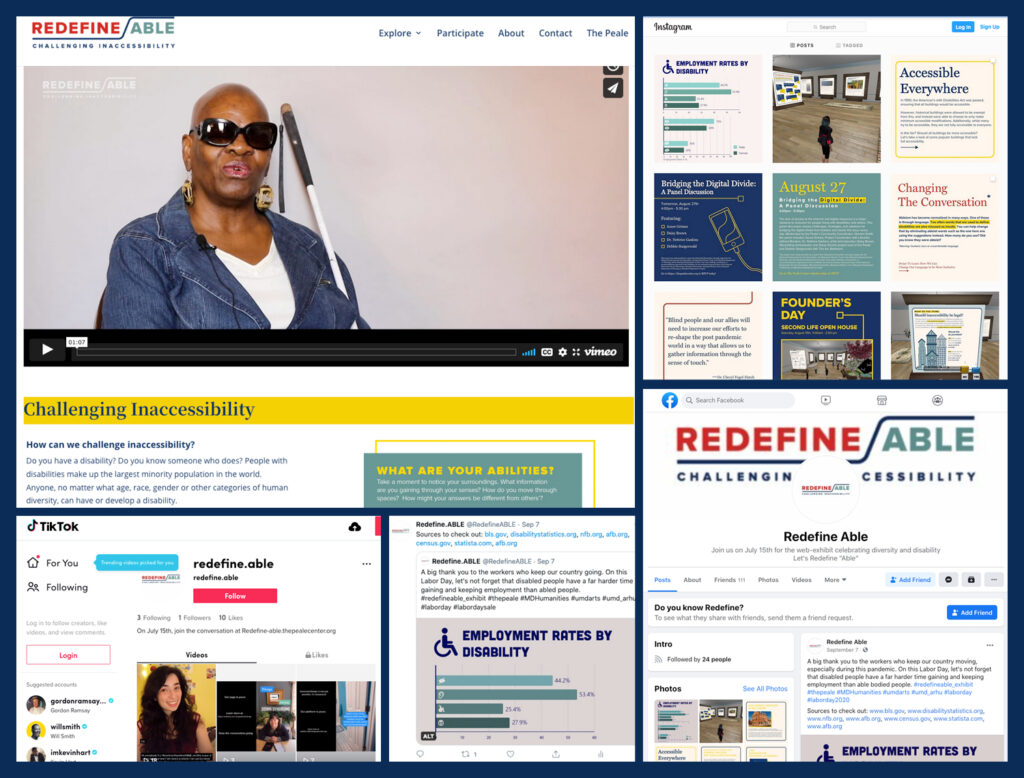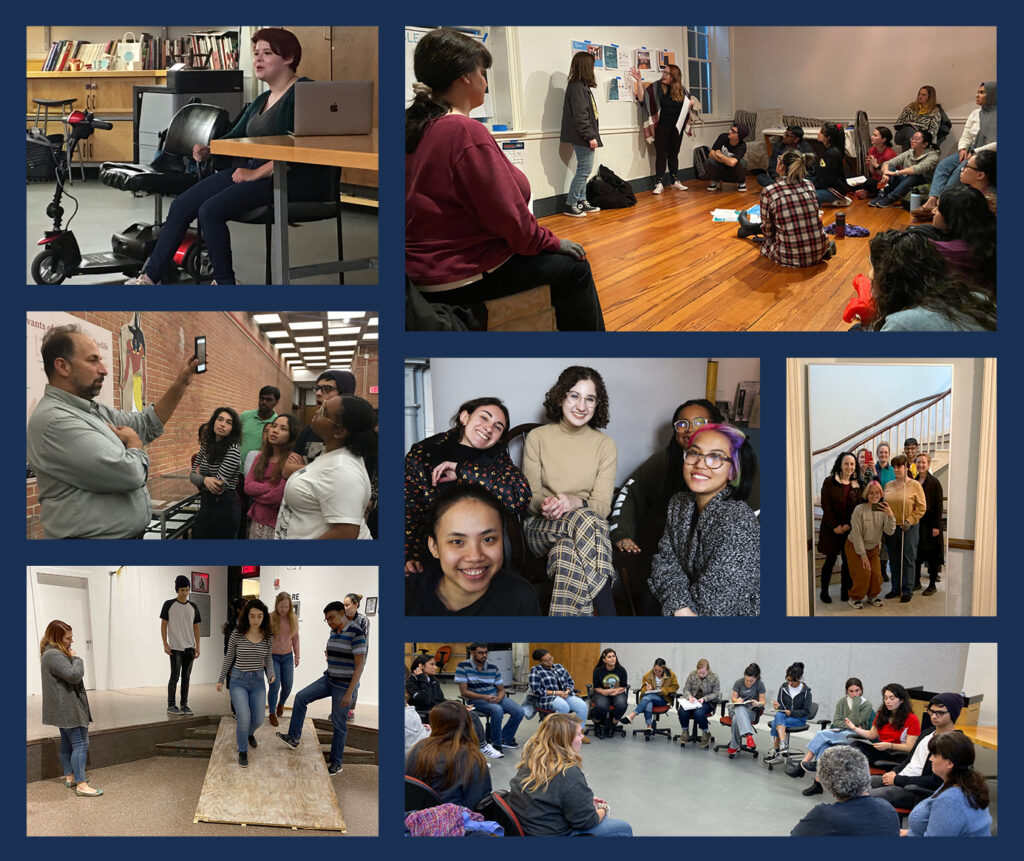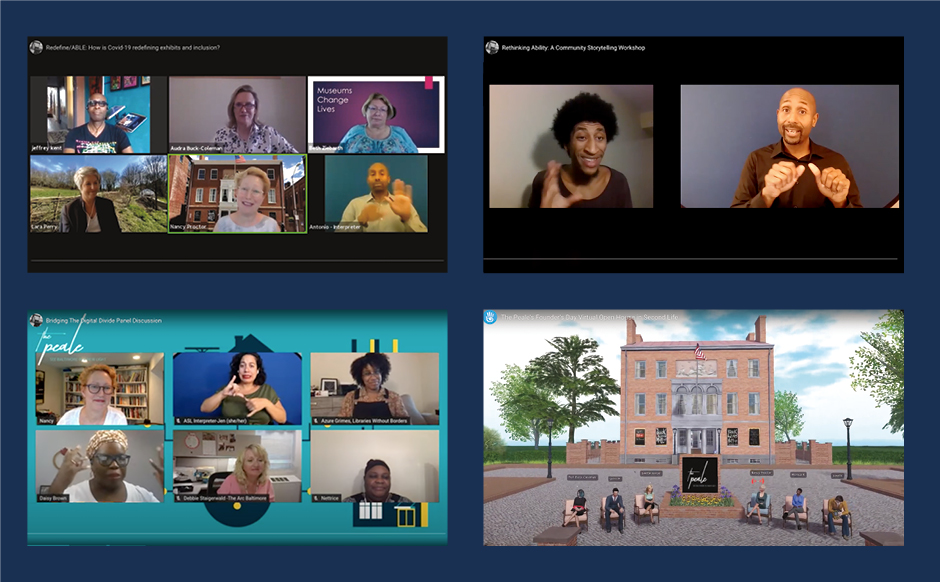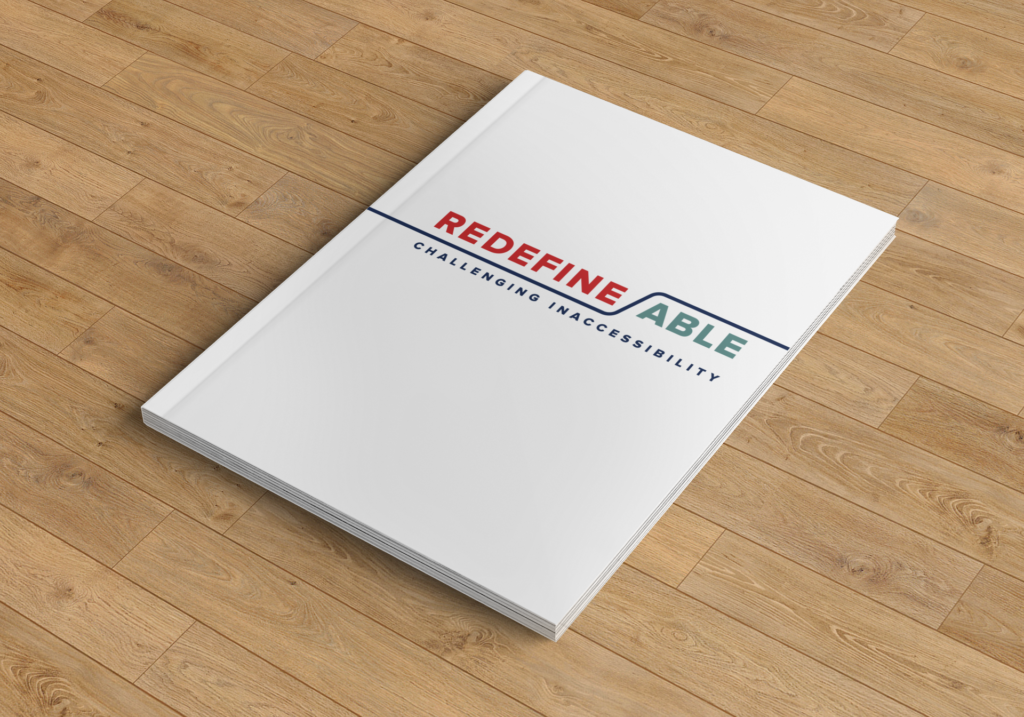Redefine/ABLE
In Redefine/ABLE, University of Maryland students explored how physical and digital museum spaces can be more inclusive and accessible and how design might interrogate ideas of “normal” and ableism.

Summary
Redefine/ABLE explores how physical and digital museum spaces can be more inclusive and accessible and how design might interrogate ideas of “normal” and ableism. Along with this, collaborators sought to elevate voices from the disability community using best practices for communicating these messages. We focused on how design might foster participation, equity, and inclusion. The exhibition was scheduled to launch mid-March 2020 in two physical venues and on a project website. The physical venues closed due to the coronavirus before this could happen.
Redefine/ABLE officially launched as virtual social media exhibition in July 2020. Results contribute to best practices for dismantling ableism and for normalizing universal design.
Collaborators
Cheryl Fogle-Hatch, Mollie Greenberg, Ruth Lozner, Robin Marquis, UMD 2020 senior design cohort
Collaborating institutions
The Carroll Mansion (USA), De La Warr Pavilion (UK), The Peale (USA), Royal Pavilion and Museums Brighton (UK), University of Brighton (UK)
Awards & Recognition
The project was awarded a £26,000 (approximately $33,800) United Kingdom’s Arts and Humanities Research Counsel grant for international collaboration with Royal Pavilion and Museums Brighton (UK), De La Warr Pavilion (UK), the Peale at the Carroll Mansion (USA), and University of Brighton (UK).
The project was awarded a $9,500 Maryland Humanities grant.
Details
Social Media
With the shift to online delivery only, we explored different social media platforms and digital outlets to reach a diverse set of audiences and to communicate through different media. Students connected the website, to posts on Instagram (@redefine.able_exhibit), TikTok (@redefine.able), Facebook (@Redefine.ABLE), and Twitter (@redefineABLE). By engaging these platforms, the project’s messages were now reaching different audiences where they were digitally.
Redefine/ABLE on SecondLife

The designs for the physical spaces were also adapted for and installed in Second Life as part of the Peale’s new installation. The Peale hosted virtual tours of the exhibition.
Process

Over the course of the 2019-2020 academic year, the 2020 University of Maryland design cohort members met with and collaborated with disabled stakeholders and other experts.
Posters

The original physical installation designs were modified to be distributed over the different social media platforms and installed in Second Life. Here are five of the more than 20 posters modified for Second Life.
Events

The Peale, our Baltimore-based project partner, hosted a series of exhibit-related events as well as supported a storytelling platform for audiences to share their experiences with the disability topics at hand.
Catalog

We also posted disability-related essays from project team members throughout the campaign. The project compilation catalog includes these as well as exhibition content and content from online events. A digital version of the catalog is located on the Peale Center’s website.
Full List of Collaborators
Project Manager: Dr. Nancy Proctor
Project Director: Dr. Audra Buck-Coleman
Creative Director: Maiu Romano-Verthelyi
Co-Creative Directors: Haley McClelland and Jordan Smith
Designers: Lily Huang, Jacqueline Kim, Aleah McWilliams, Richa Mishra, Grant Neave, Anh Nguyen, Julia Peigh, Elizabeth Pham, Disha Shetty, Sanjayan Vijayaverl, Emma Weisbaum, Diana Wikner, and Maryam Zehra
Collaborators: Dr. Cheryl Fogle-Hatch, Mollie Greenberg, Ruth Lozner, and Robin Marquis
Contributors: Sabrina Epstein, “Yoshi” Nakaruma, Joe Olson, and Marguerite Woods
Second Life Collaborators: Virtual Ability, Inc., led by Gentle Heron and Eme Capalini; David London, the Peale’s Chief Experience Officer; Patch Linden, Brett Linden, Strawberry Linden, and the Linden Lab moles
U.S. Project Hosts: The University of Maryland, College Park Department of Art Graphic Design Concentration; the Peale at the Carroll Mansion with support from staff members Maya Wilson, Lara Wolf, and Heather Shelton
U.K. Project Partners: Dr. Lara Perry, Dr. Claire Wintle, and Prof. Jeremy Aynsley, University of Brighton; Rosie Cooper, De La Warr Pavilion; Kevin Bacon, The Royal Pavilion and Museums, Brighton & Hove
Assessment: Dr. Naliyah Kaya
Programming event participants: Beth Ziebarth, Director of Access Smithsonian; Jeffrey Kent, Artistic Director at the Peale; writer and educator, Mandla “Kosi” Dunn; George Ciscle, Curator-in-Residence, Emeritus at Maryland Institute College of Art; Monica Rhodes, Director of Resource Management, National Park Foundation; Dr. Jeremy Wells, Associate Professor in the Historic Preservation program in the School of Architecture, Planning and Preservation at UMD; Noreen Smith, educator and Peale outreach collaborator; Azure Grimes, Senior Program Manager at Libraries Without Borders; Daisy Brown, the Peale’s Storytelling Ambassador and Photographer; Dr. Nettrice Gaskins, artist and Assistant Director of the STEAM Learning Lab at Lesley University; and Debbie Staigerwald, Director of Volunteers and Interns at the Arc, Baltimore.
Additional support from: Titus Bicknell, Dr. Quint Gregory, and Kyungjin Yoo